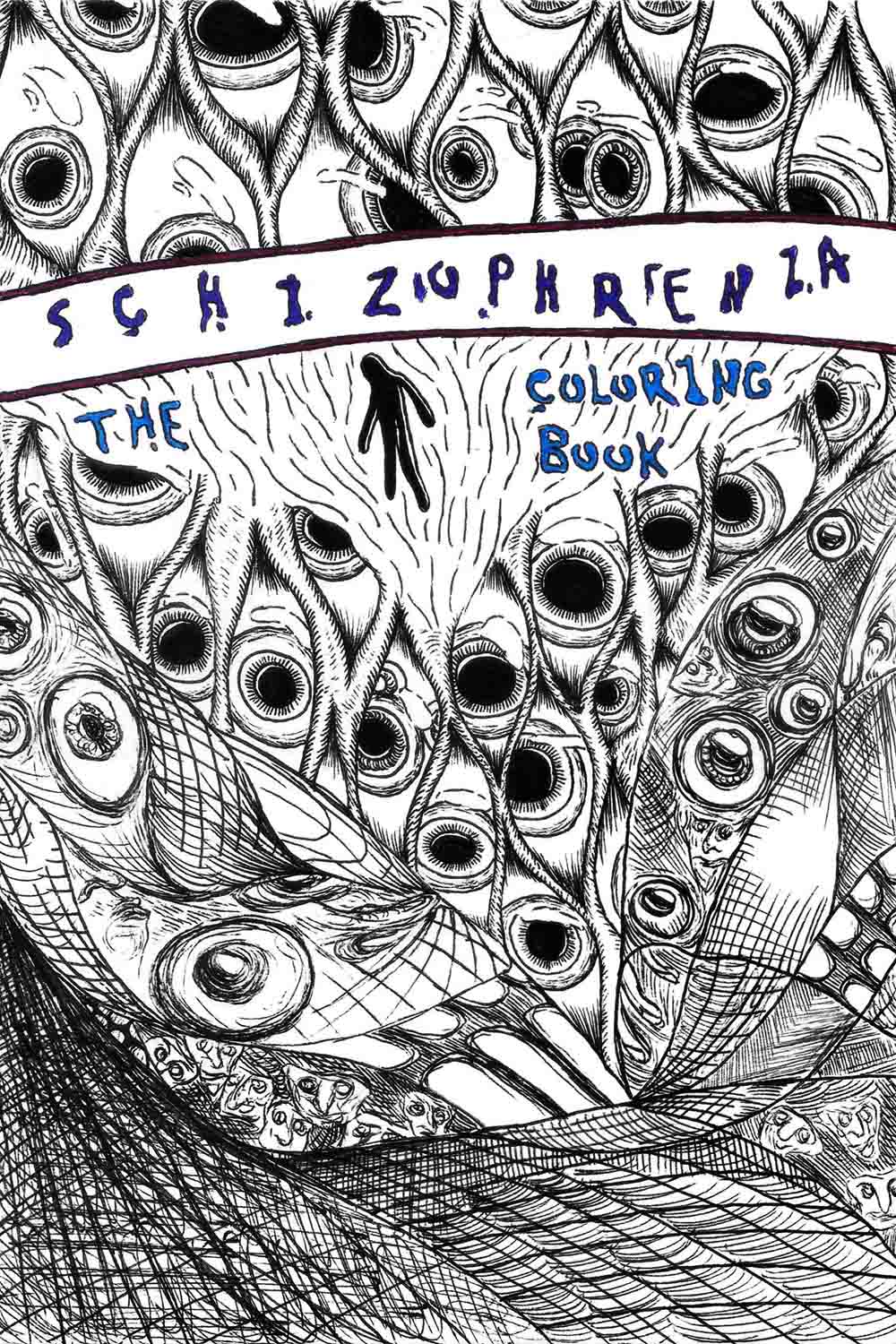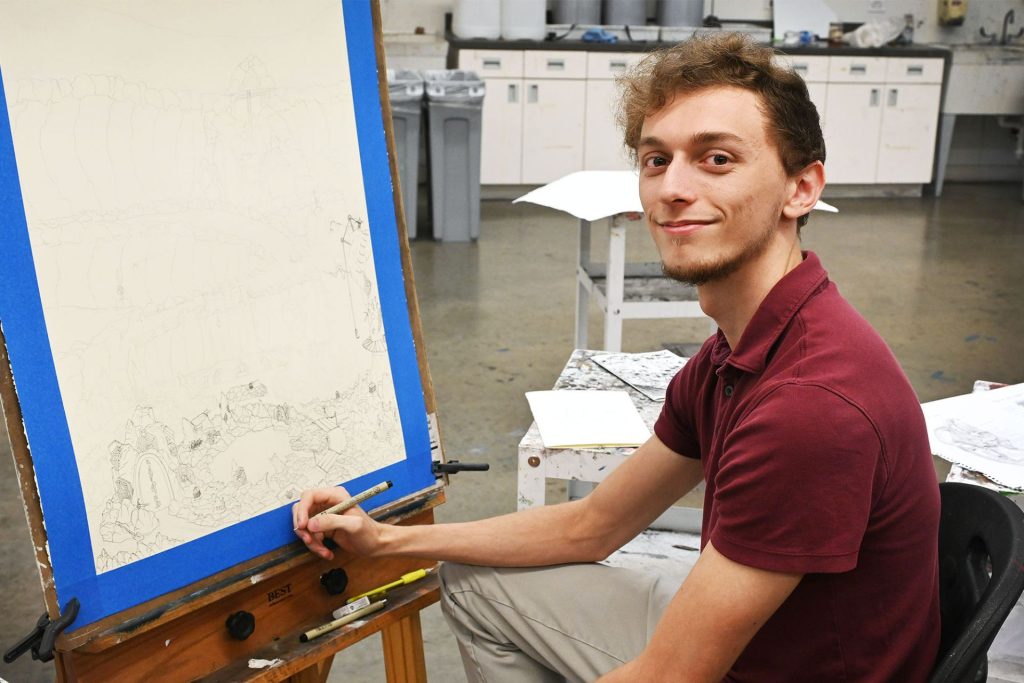
Last spring a University of Texas at Dallas student created a coloring book that illustrates and describes schizophrenia for a class assignment. Now the book is for sale, and neuroscience senior Landon Norman is donating half the profits to university research on the disorder.
During classroom lectures, Norman appears to spend a lot of time doodling. But a closer look reveals sketches that are actually elaborate pen-and-ink drawings of the class subject matter — neurons in the brain, the bony structure of the skull or different types of muscle cells. His drawings, he said, help him understand the detailed world of anatomy that are part of his studies in the School of Behavioral and Brain Sciences.

“My lecture notes are just covered in drawings. I love the tiny details of science and chemistry, especially of the mind,” Norman said. “I started drawing during my neuroscience classes, and it was fun drawing the different neurons in the body with their different parts, like axons, dendrites and all that stuff.”
In a neuropharmacology course, the professor asked the students to create an artistic interpretation of a subject studied in class. Norman chose schizophrenia, but he didn’t stop at one drawing; he prepared nine illustrations of hallucinations, feelings of isolation and paranoia, cognitive difficulties, and others. He combined his drawings with descriptions of the mental health disorder and realized that his “coloring book” might make an effective learning tool.
“Drawing definitely impacts learning,” Norman said. “People form memories by repetition, and when you’re drawing something, it takes a while, so through the entire process you’re thinking about drawing this over and over and over again. Eventually it just solidifies exactly what you’ve learned.”
Norman fine-tuned the finished product and created an artist’s site on the e-commerce website Etsy. He decided to give half of the $9 profit per book to the UT Dallas laboratory of Dr. Amy Pinkham, professor of psychology, who studies the behavioral characteristics and neural underpinnings of social cognitive functioning in individuals with severe mental illness, including schizophrenia.
After he graduates, Norman is planning to apply to medical school. But he doesn’t want to neglect his new vocation as a medical illustrator either.
“I view this as a way of translating words into something that someone can see and observe and understand,” Norman said. “That’s really how I view art — as a way of bridging gaps between people’s understandings of things.”
